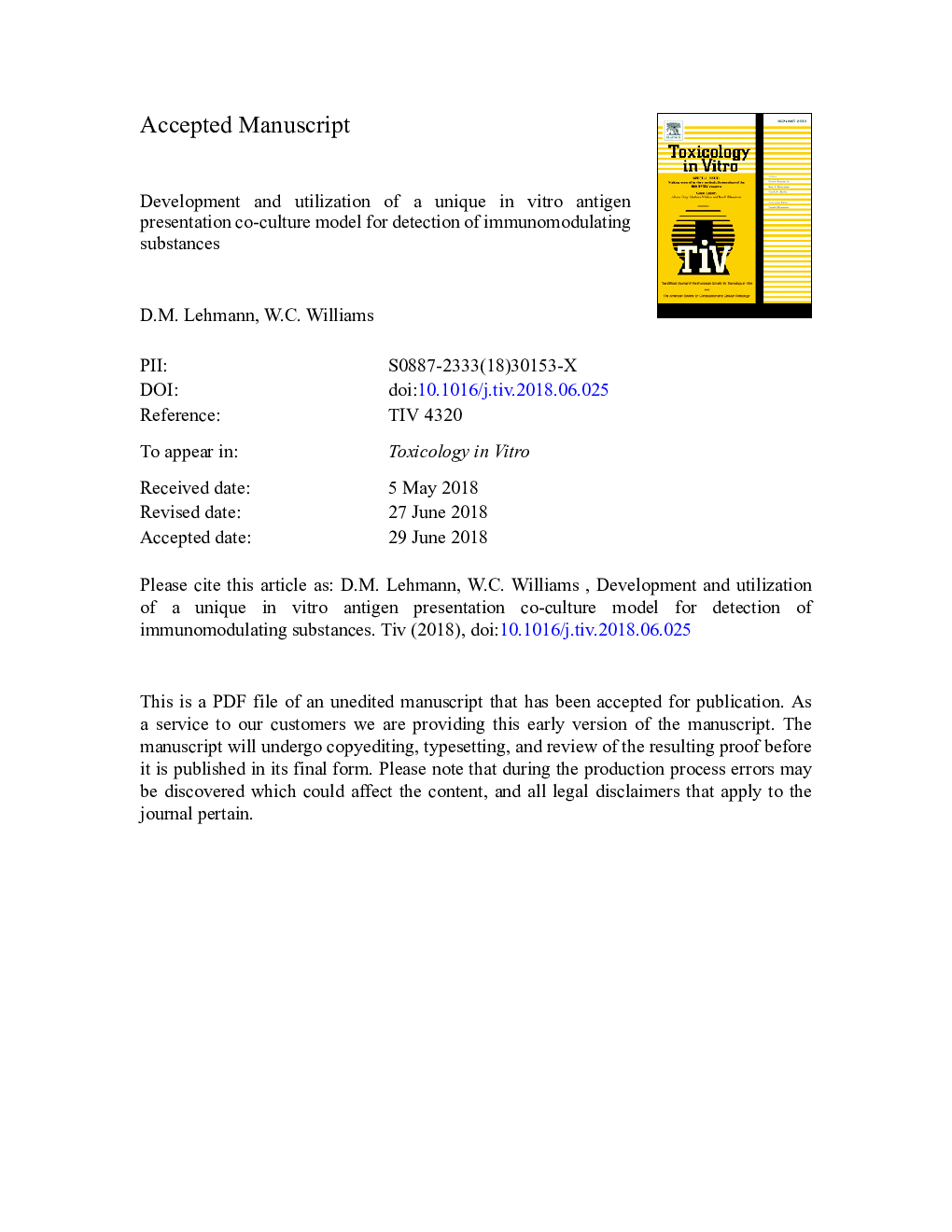| Article ID | Journal | Published Year | Pages | File Type |
|---|---|---|---|---|
| 8553672 | Toxicology in Vitro | 2018 | 33 Pages |
Abstract
Current regulatory immunotoxicity studies require the use of animal models. However, evolving regulatory requirements, the need to evaluate large numbers of chemicals efficiently and societal pressures are driving the development and utilization of alternative in vitro methods for identifying potential immunotoxicants. In line with these efforts, we developed a novel in vitro cell-based assay to evaluate effects on antigen presentation - a key step in successful immunization. In this assay, Ch27 B cells acquire and present hen egg lysozyme peptides to antigen-restricted 3A9 T cells, causing them to produce and secrete IL-2. IL-2 levels in the culture medium may be monitored to identify effects of immunotoxicant exposure on antigen uptake, processing or presentation by the Ch27 cells and on antigen recognition and IL-2 production and secretion by the 3A9 cells. IL-2 production was reduced in response to treatment with well-known immunotoxicants cyclosporin A (CYA), dexamethasone (DEX), azathioprine (AZPR), methotrexate (MOT) and benzo(a)pyrene (BAP) but was not affected by treatment with cyclophosphamide (CYPH). A negative control compound mannitol (MANN) altered neither cell viability nor IL-2 levels whereas the lysosomotrophic compound ammonium chloride (AMCL) reduced IL-2 production. This novel in vitro assay of immune function may be suitable for integration into a tiered testing battery for screening and prioritization of potential immunosuppressants.
Keywords
URECyAEPADEXFBSTMBSRBCDPBSIL-2APCDMSOazathioprineEnvironmental Protection AgencyAntigen presentationUrethaneInterleukin-2tetramethylbenzidineanalysis of varianceANOVAhen egg lysozymeELISAMOTIn vitroDexamethasoneDimethylsulfoxideAlternative methodsfetal bovine serumImmunosuppressionantigen presenting cellImmunotoxicologycyclosporin Acyclophosphamide monohydrateDulbecco's phosphate-buffered salineMethotrexateMHCmajor histocompatibility complexImmune modulationHELSheep Red Blood Cell
Related Topics
Life Sciences
Environmental Science
Health, Toxicology and Mutagenesis
Authors
D.M. Lehmann, W.C. Williams,
